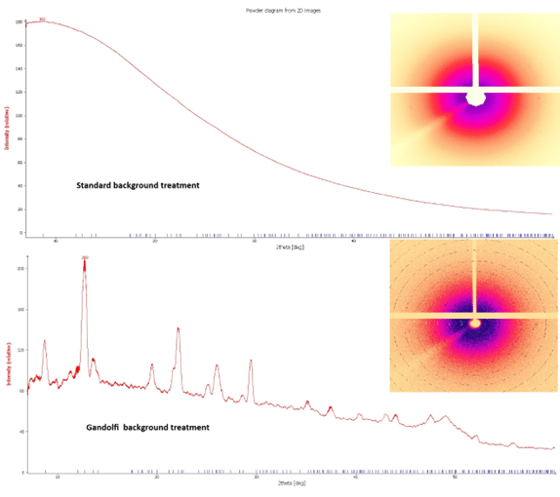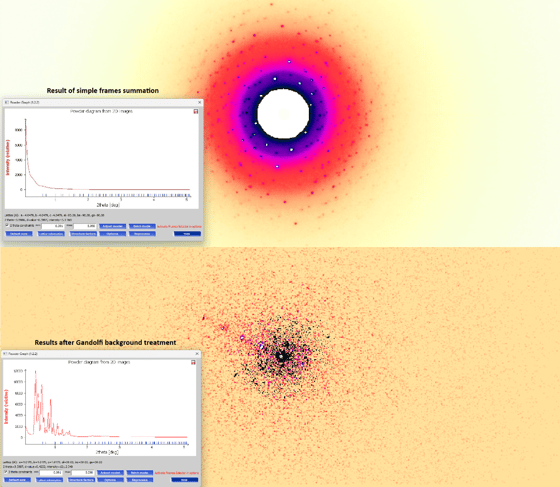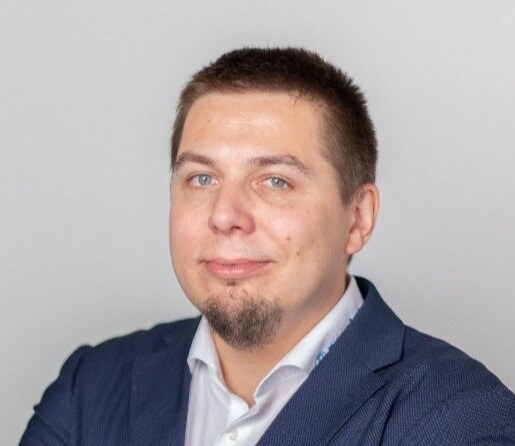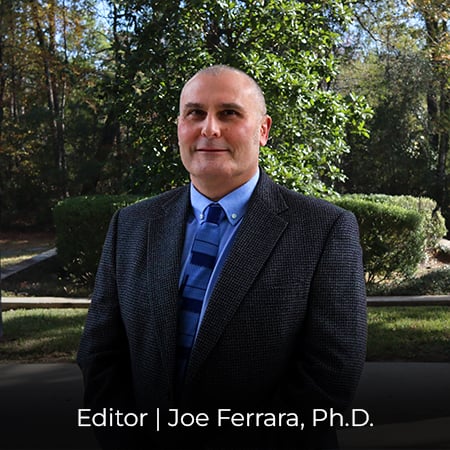CrysAlisPro Tip
Background Computations for Powder Analysis from Single Crystal Datasets
CrysAlisPro allows the generation of powder diagrams from micro-powder and single-crystal datasets by applying simple frame accumulation and signal extraction from sum-up images. This is a helpful tool for quickly comparing experimental patterns, even before final crystal structure model refinement.
In the case of high-background datasets and powder experiments collected from a cluster of single crystals using the Gandolfi method, simple frame accumulation may lead to high noise and a significant background hump on extracted 1D diffraction pattern. In the case of a very weak dataset, the background accumulation can even hide the sample signal completely, as shown in the figure below.

In such cases, it is recommended that the background computations be made in batches and their substructions made before final signal accumulation. The powder diagram extraction and calculations require more time, but the resulting diagram is much clearer.
To enable Gandolfi background treatment, access the Advanced powered extraction option window by selecting the option (1) button in the Powder Graph tool in CrysAlisPro. Locate and select the Gandolfi (for single crystal frames) option (2), confirm it with the OK (3) button, and repeat the analysis by hitting the Reprocess button (4). The simplified workflow is shown in the figure below.

A 25° range is recommended as default for all background treatments in CrysAlisPro. However, it can be adjusted from 5° to the length of the scan. The shorter the range, the better background and signal separation are expected, at the cost of longer computations.
This background treatment is essential for signal extraction from 3DED datasets, as shown in the figure below.

More information and examples can be found in the CrysAlisPro help system at the ITS 81.
Author

Rigaku Europe SE (RESE) | Neu-Isenburg by Frankfurt am Main, Germany
Dr. Jakub Wojciechowski is an application scientist working in the Rigaku Europe SE office based in Germany. Before Jakub joined Rigaku, he spent seven years as a crystallographer, research scientist and lecturer at the Łódź University of Technology in, Łódź, Poland. During this period, Jakub regularly collaborated with synthetic chemists, very often providing crucial information for publications, which is absolute structure results. Jakub is now responsible for supporting Rigaku’s clients in the Europe/Middle East/Africa region, helping them with data collection and processing, and also crystal structure publication. Want to learn more? Connect with Jakub Wojciechowski, PhD LinkedIn .

Subscribe to the Crystallography Times newsletter
Stay up to date with single crystal analysis news and upcoming events, learn about researchers in the field, new techniques and products, and explore helpful tips.

Contact Us
Whether you're interested in getting a quote, want a demo, need technical support, or simply have a question, we're here to help.
